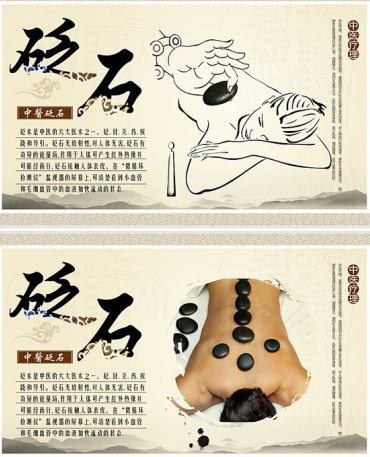Dampness is predominant in late summer but also can be encountered in other seasons. Since it is hot in late summer, dampness permeates everywhere due to fumigation and frequently causes disease. Sometimes drench or living in damp area also results in disease of dampness.
The following is a brief description about the nature and characteristics of dampness in causing disease:
Heavy and Turbid
Dampness pertains to yin, so it is heavy. The attack by dampness will lead to such symptoms as heaviness of the body, or heaviness of the four limbs, or heaviness of the head like being bound, or heaviness and lassitude of the whole body. Dampness is similar to water and it often mixes up with water. That is why it is turbid. Invasion of dampness into the body often brings on the symptoms of turbid secreta and excreta, dirty complexion, excessive secretion of gum in the eyes, loose stool, mucous and bloody dysentery, turbid urine, leukorrhea and oozing eczema.

Tend to Block Qi
Dampness moves slowly because it is heavy. So it tends to retain in the viscera and meridians, inhibits the flow of qi and disturbs the activity of qi, frequently leading to chest oppression and fullness, scanty and unsmooth urination and inhibited defecation. On the other hand, dampness pertains to yin and tends to impair yang-qi. Thus prolonged blockage of qi by dampness will prevent yang-qi from flowing, often causing exuberance of dampness and decline of yang.
Since dampness pertains to earth in the five elements and is related to the spleen, it tends to impair the spleen, bringing on encumbrance of the spleen by dampness and stagnation of qi in the middle energizer. If dampness impairs yang, it will inactivate spleen-yang and further accumulate water and dampness, leading to diarrhea, scanty urine, edema and ascites.
Sticky and Stagnant
These characteristics of dampness usually affect people in two ways. One is that the disease caused by dampness is not brisk. For example, the secreta and excreta are too sticky to be excreted. The second is that the disease caused by dampness is obstinate and recurring with long duration, such as damp-bi syndrome (damp-blockage syndrome), eczema and damp-warm syndrome.
Tend to Move Downward
Dampness is similar to water, so it tends to move downward. Firstly, it impairs the lower part when it attacks the body. That is why Huangdi Neijing says that "when dampness attack the body, it first impairs the lower part of the body". Secondly, the disease caused by dampness usually involves the lower part of the body. For example, edema often mostly involves the lower limbs; stranguria, leukorrhagia and dysentery all occur in the lower part of the body. Thirdly, the disease caused by dampness usually is transmitted from the upper to the lower. For example, damp-warm disease is usually transmitted from the upper energizer to middle energizer and lower energizer; stranguria, leukorrhagia and dysentery may be caused by downward migration of dampness.







